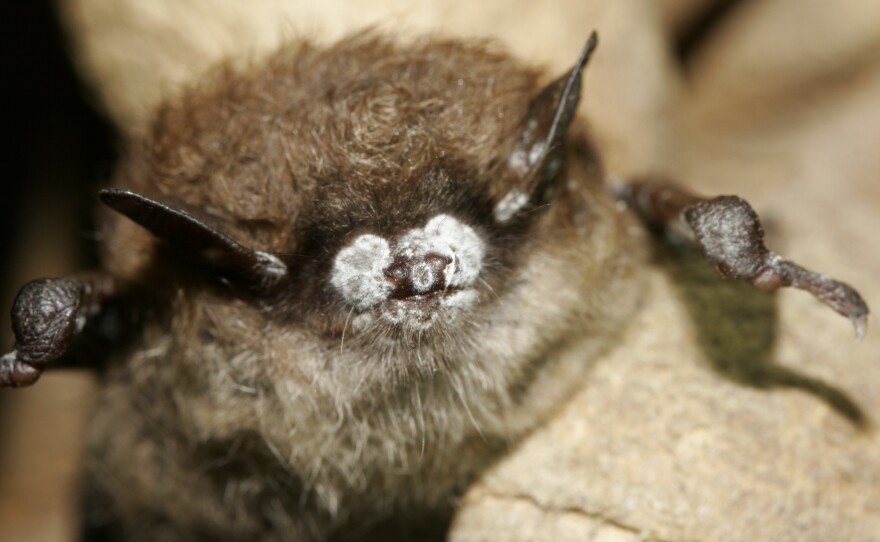

They may not be the most attractive creatures in the world, and they scare the life out of many people, but you have to feel bad for the bat.
Millions of them are dying across the Northeast, the Midwest and parts of the South, from a disease called White Nose Syndrome, named for a white fungus that crusts their faces.
Seven species of bats are being decimated by White Nose Syndrome; the hardest-hit species is the northern long-eared bat. Last week, the federal government listed it as a threatened species under the Endangered Species Act.
Tony Sullins, an endangered species expert with the Fish and Wildlife Service, says the bat falls just shy of being listed as endangered. He says the northern long-eared bat is not on the brink of imminent extinction.
"But within the foreseeable future, we anticipate that the species will become endangered due to White Nose Syndrome, and that's the very definition of threatened under the Endangered Species Act," he says.
Designating the northern long-eared bat as threatened triggers new regulations and protective measures, such as restricting some tree removal from forested area, especially in the summer months when newborn bats are nesting.
But oil and gas, timber and farming associations say adhering to those rules could drive up costs and limit new projects. Mark O'Neill, spokesman for the Pennsylvania Farm Bureau, says the new regulations could prevent farmers from putting wind turbines or natural gas wells on their property, and affect components of how they grow crops, including the legal application of pesticides.
"We want to make sure that it's very clear that any decision that has been made does not impact [pesticide use], because that obviously would be something of major concern to farmers here in Pennsylvania and across the nation," says O'Neill.
O'Neill says businesses are being unfairly targeted by the new protections for the northern long-eared bat.
"We recognize there is an issue with the bat population, but agriculture has nothing to do with that. We want to make sure what's best for the bats, but we also want to make sure that we're not threatening the livelihood or the potential economic viability of farmers," he says.
The rules are set to take effect next month. O'Neill says the Pennsylvania Farm Bureau and other organizations will continue to voice their concerns to the Fish and Wildlife Service over these protections for the northern long-eared bat.
But Sullins, with the Fish and Wildlife Service, says the effort to conserve the bat is important.
"The service has awarded over $20 million in grants to explore the different facets of White Nose Syndrome, to try to better understand it, to treat it [and] to combat it," he says.
Jonathan Reichard, national assistant White Nose coordinator for the Fish and Wildlife Service, says the fungus causing White Nose Syndrome is found in caves and mines where bats hibernate. He says it was discovered back in 2007 by biologists doing surveys in a cave near Albany, N.Y.
"When bats are hibernating, they're hanging from the ceiling of a cave or mine and oftentimes all you can see are their faces ... the first observation was these noses all huddled together with fluffy white growth around their muzzles. It's a pretty sobering thing to look at."
He says the bats die in various ways, including starvation, dehydration and exposure, and that there is mounting evidence that the fungus causing White Nose Syndrome is not native to North America — that it was somehow transplanted here.
"There are numerous hypotheses out there of how this could happen; a bat caught in a windstorm from Europe, or a bat stowing away on a container that could have brought it," he says.
One reassuring sign is that some bats are surviving White Nose Syndrome. That's good news, as bats are an important part of the ecosystem.
There's no need for repellents if you have these flying mammals around; one bat can eat up to 1,000 mosquitoes in an hour.
Copyright 2015 NPR. To see more, visit http://www.npr.org/.






